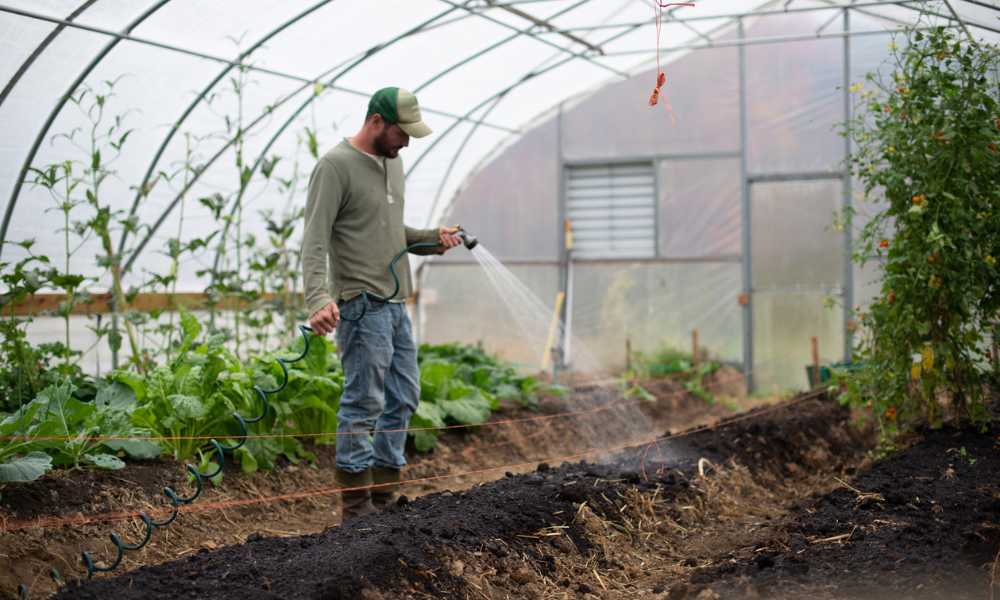Greenhouses can be a valuable asset to a garden, but they can also be quite expensive to run. In the summertime, when the weather is hot and humid, it can be difficult to keep a greenhouse cool without using electricity. There are a few ways to do this, but each has its own limitations. One way is to use fans to circulate air. Another is to use water to cool the inside of the greenhouse. But both of these methods have their own drawbacks.
Greenhouses can be a great way to grow plants and produce food, but they can also be quite hot in the summertime. One way to cool a greenhouse without electricity is to use fans. You can also install air conditioning, but this will require electricity to run it. Alternatively, you can keep the greenhouse at a lower temperature by using fans or air conditioning.
What is a greenhouse and how do they work?
A greenhouse is a structure that traps heat and allows plants to grow in the warmest months. The basic structure of a greenhouse is made up of metal frames covered with glass, plastic, or other material. The frames are often placed on a concrete slab so that the soil can be kept dry and heated by the sun. Greenhouses are used to grow flowers, vegetables, fruits, and trees.
Cooling a greenhouse without electricity
Cooling a greenhouse without electricity can be done in a few different ways. One way is to use evaporative cooling. Evaporative cooling works by using the sun’s heat and the wind’s motion to cool the air. Another way is using a fan to circulate the air.
Benefits of using cooling techniques in greenhouses
One of the most important aspects of greenhouse growing is ensuring that the plants are kept cool. There are many different ways to accomplish this, and each has its benefits.
Water cooling is one of the most common techniques used in greenhouses. It involves using a series of large ponds or reservoirs to store water and then using fans to send air over the surface of the water. This process cools the water down and can help to keep plants cool during hot weather. Water cooling also helps to maintain a consistent temperature throughout a greenhouse, which is important for keeping plants healthy and productive.
Another common technique used in greenhouses is air conditioning. Air conditioning uses fans or air compressors to push cold air into a greenhouse, which can help to keep plants cool during hot weather.
What are some ways to cool a greenhouse without electricity?
Cooling greenhouses without electricity is not always an easy task, but there are a few ways to go about it. Greenhouse cooling can be done with a number of different methods, including using evaporative cooling, fans, and reflective surfaces. One popular method of evaporative cooling is to water the plants in a greenhouse with a source of cool water, such as a deep well or an ice chest. The cool water causes the plants to release their stored energy in the form of vapor, which is then drawn up into the sky by the breeze.
Cons of using cooling techniques in greenhouses
Cooling techniques are often used in greenhouses to control the temperature. However, some cons of using cooling techniques have been noted. One major con is that it can reduce crop yields. These include that it can increase humidity levels, slowing plant growth, and damage plants. Additionally, some researchers believe that cooling the environment too much can cause frost damage to plants.
What are some alternative methods of cooling a greenhouse?
There are a variety of cooling methods that can be used to reduce the temperature of a greenhouse. The most common methods are air conditioning, water cooling, and evaporative cooling.
Air conditioning: air conditioning is the most common method of cooling a greenhouse. It involves running an air conditioner in the facility to cool the air. This can be expensive, but it is usually the most effective way to cool a greenhouse.
Watercooling: water cooling is another method of cooling a greenhouse. It involves running water through the walls or floor of the greenhouse to cool it down. This can be more expensive than air conditioning, but it is usually more effective because it doesn’t use electricity. Then, evaporative cooling is another option for cooling a greenhouse.
Conclusion
In conclusion, there are a few ways to cool a greenhouse without electricity. One way is to use circulating air. Another study of cooler use is appropriate. The last way is to use a passive solar cooling system. Each of these methods has its own pros and cons, so it is important to choose the best option for your specific greenhouse situation.
